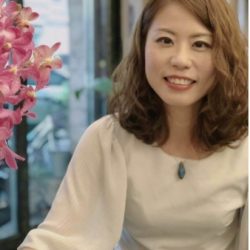Koching Chao, Assistant professor, National Sun Yat-sen University (Taiwan)
Project title: Participatory Art and Civic Identity in Post-industrial Kaohsiung, Taiwan
Koching’s project responds to the urgent need for urban renewal in Kaohsiung, Taiwan. As one of the most important international commercial harbors in Taiwan, Kaohsiung was a thriving and prosperous industrial city in the 1960s. However, after the country’s industrial transformation in the 1980s, its labor-intensive industry no longer functioned as the country’s financial cornerstone. Since then, the public identity of the city has suffered from its ageing population and gloomy post-industrial cityscape. To rejuvenate people’s stereotypical impression of post-industrial Kaohsiung, the local government has introduced a serious of art-centered projects, including constructing artistic and cultural facilities and organizing national and global cultural festivals and events. Following this art-centered urban revitalization strategy, Koching has cooperated with the Kaohsiung Museum of Fine Arts (KMFA) to implement participatory art-based projects to the undergraduate curriculum. In the past two years, four undergraduate courses were designed to engage students from different disciplines to experience the city’s change through arts and culture. Students have been encouraged to initiate innovative and experimental art-related projects to express their perception of the city.
This research will remedy the gap by exploring the interrelationship between the bottom-up art projects and participants’ local identity. In particular, this research aims to tackle the following questions: (i) Could participatory arts enhance students’ sense of attachment to the city of Kaohsiung where they live and study? (ii) In what ways could the actual involvement in art-related actions change their place identity of Kaohsiung?
The subject of this research is the undergraduate students enrolled in the classes co-taught by Koching at National Sun Yat-sen University and the research teams at KMFA. To understand the effectiveness of participatory art-based projects in influencing students’ perception of Kaohsiung, this research utilizes both quantitative and qualitative research tools. (i) Quantitative research tools: this research adopted development questionnaires, including the Place Attachment Inventory questionnaire (PAI, Williams and Vaske: 2003), the Place Meaning Survey (PMS, Young:1999), and the University’s student post-class satisfaction survey to collect data. The pre-test and post-test results will enable us to analyze students’ sense of belonging and place identity in Kaohsiung. (ii) Qualitative research tools: a semi-structured interview is designed to measure students’ local awareness and attitudes towards Kaohsiung after they completed their art-based projects. The size of the focus group is about 10 students (1/5 of the enrolled students). KMFA staffs will also be invited to interview to share their pinion on this project.
This project collaborates with the Kaohsiung Museum of Fine Arts (KMFA), Kaohsiung’s most significant art center and one of the three national galleries in Taiwan. After its organizational reform in 2007, KMFA targeted transforming the Museum itself into the city’s creative and innovative hub. Its participation in this project indicates rich resources from the local art community and governmental cultural divisions, which could significantly contribute to enhance the link between art and society through higher education classroom. The role of KMFA in this research project is threefold: (1) Expanding students’ off-campus learning experience: The collaboration between KMFA and the National Sun Yat-sen University intends to enhance students’ learning experience outside the University’s classroom. In the co-designed course, students can receive information and knowledge of first-hand artistic events in speeches and workshops with art professionals. In addition, field trips to the museums and other creative fields in the city are designed to immerse students to a creative environment. KMFA will also provide venue for students to conduct their art-based project. (2) Providing students with professional art-related advice:
In the field of participatory arts-based research, the participation of specialists is crucial to the outcome of the learning experience (Leavy, 2018; Nunn, 2020). Since the classes are offered to students of all majors, additional assistants are crucial to build up their confidence and capability in appreciating arts. In this project, KMFA’s researches and curators play a key role in assisting and evaluating students in their process of designing and executing art-based projects. Their feedback and advice have significantly increase students’ confidence and interests in arts. In addition, the Museum’s network with experts and artists from the local and the global backgrounds is another source of assistance that enable students to have a dialogue with experienced art-related professionals. (3) Engaging students with art and city through internship: After obtaining relevant knowledge in the field, students who are willing to devote themselves to this discipline can apply for internship positions at KMFA. Such experience would enhance students’ connection to the Museum and the public, making these youth gain a more profound attachment to the city.
